In the constantly-evolving world of immersive audio, Steven Wilson remains about as prolific as one can be. Just within the last 18 months, fans have been treated to his spatial audio remixes of classic albums from high-profile acts such as Tears For Fears, ABC, Chic, Ultravox, Suede, The Who, and Van Morrison. His work curating the back-catalogs of bands such as Jethro Tull, King Crimson, Gentle Giant, and XTC continues to be touted as the gold standard for how to treat iconic music with care and reverence.
In September 2023, Wilson released his eighth studio album: The Harmony Codex. Developed over a two-year period, the album is a genre-bending collection of eclectic songs that opens up like a musical puzzle box. Both The Harmony Codex and its predecessor The Future Bites (2021) achieved #4 positions on the U.K. album chart.
I recently had the chance to catch up with Steven during a rare lull in activity, in which we spoke about upcoming immersive projects, future touring plans, and more!
I feel a bit bad asking this–since you were on tour with Porcupine Tree not that long ago–but now that The Harmony Codex is out, can you let us in on any plans for the live experience?
The funny thing is I actually didn't book a tour for this album, because I wasn’t sure how well it was going to go down. The album ended up getting a fantastic response, so I talked to my agent and asked if we could set up a tour for it, but by that point many of the venues I would have ideally played were already booked up for the next year or so.
Everything’s changed since COVID, touring has become more popular than ever. It seems like everyone is out there.

So instead I’ve actually started making a new record–and my plan for now is to finish that, put it out at the beginning of next year, then tour. On the plus side, it will mean I’ll have new repertoire from three records: The Future Bites, The Harmony Codex, and this new one, as well as being able to draw from the back catalog.
You’ve never been shy about using the studio as an instrument, but these last two records took that concept to another level. Some of the more-electronic tracks, like “King Ghost” or “Economies Of Scale,” are essentially solo performances built entirely around programmed soundscapes. Even the more traditional band-based tracks, like “Impossible Tightrope” or “Staircase,” are quite complex as well. Do you have any reservations about getting this material to work in a live context?
I have this problem with every album I make, but fortunately I’m able to employ amazing musicians when I go out on the road. People like Adam Holzman and Nick Beggs have been with me for ages now and they’re just incredible players. Every time I think there’s some new piece of music we won’t be able to pull off live, they usually prove me wrong.
“Impossible Tightrope” won’t be easy, but I’m actually more nervous about some of the more electronic tracks. Like you said–some of them will require a greater reliance on programmed sounds, and I’ll have to see how that really works as a live experience. But with so much new repertoire, I’ll be able to cherry pick which songs work the best live.
Having said that: at The Harmony Codex launch show in London back in September, I actually played both “King Ghost” and “Economies Of Scale” and it worked fantastically well. It was just me playing keyboards and Niko Tsonev on guitar. I had a headset mic and ran all the arpeggiators and sequencers live off MIDI. It’s definitely a different approach than I’m used to, but I think it sounded great.

Going back to the last Porcupine Tree record, I assumed “Walk The Plank” would be really difficult to perform live because of all the production and layering in the studio version. I saw the band play at Radio City Music Hall in September 2022 and that song was a highlight of the performance. I was surprised how few backing tracks you used during that show, it really was live.
For sure, it really was. The other thing that’s important to note is that you don’t have to be slavishly faithful to the studio versions. With Porcupine Tree, we didn’t try to reproduce every single sound design element on stage. We created something that worked in a live context and sounded genuinely live, which I think will certainly be the case with my solo material as well.
Porcupine Tree’s Closure/Continuation Live Blu-Ray recently came out and it sounds amazing. You’ve done a number of these concert Blu-Rays over the years, but I think this was the first one to have a Dolby Atmos mix. So how do you approach making an Atmos mix of a live show?
That's the million dollar question, isn't it? Do you play it safe and try to be faithful to the experience of actually being in the audience? I usually do quad sound for my solo shows–with speakers actually behind the audience–but we didn’t do that with the Porcupine Tree shows, it was purely the front line. So should I mix it like that?

Over the years I’ve come to the conclusion that it’s better to try and make it a fun experience, rather than adhere to a self-imposed limitation of wanting to be faithful to the sound inside a venue. Why not move some sound design elements up the height speakers? It should be something that people want to listen to again and again, with a degree of sonic excellence. If you want people to actually enjoy multiple viewings then inevitably it’s better to clean up mistakes and tuning issues, but the overall idea is to keep the live energy.
I thought it was great how you put a lot of Richard Barbieri’s ambient synth parts in the top speakers.
Hypothetically, if we were able to take out a spatial audio system and place it in the venue every night, I think that’s exactly what we would have done. Richard’s sound design elements would sound great spread all around and above the listeners.
So the overall idea is to imagine what we might have done if we had a spatial audio PA in the venue on the night, rather than what we actually did–if that makes sense?
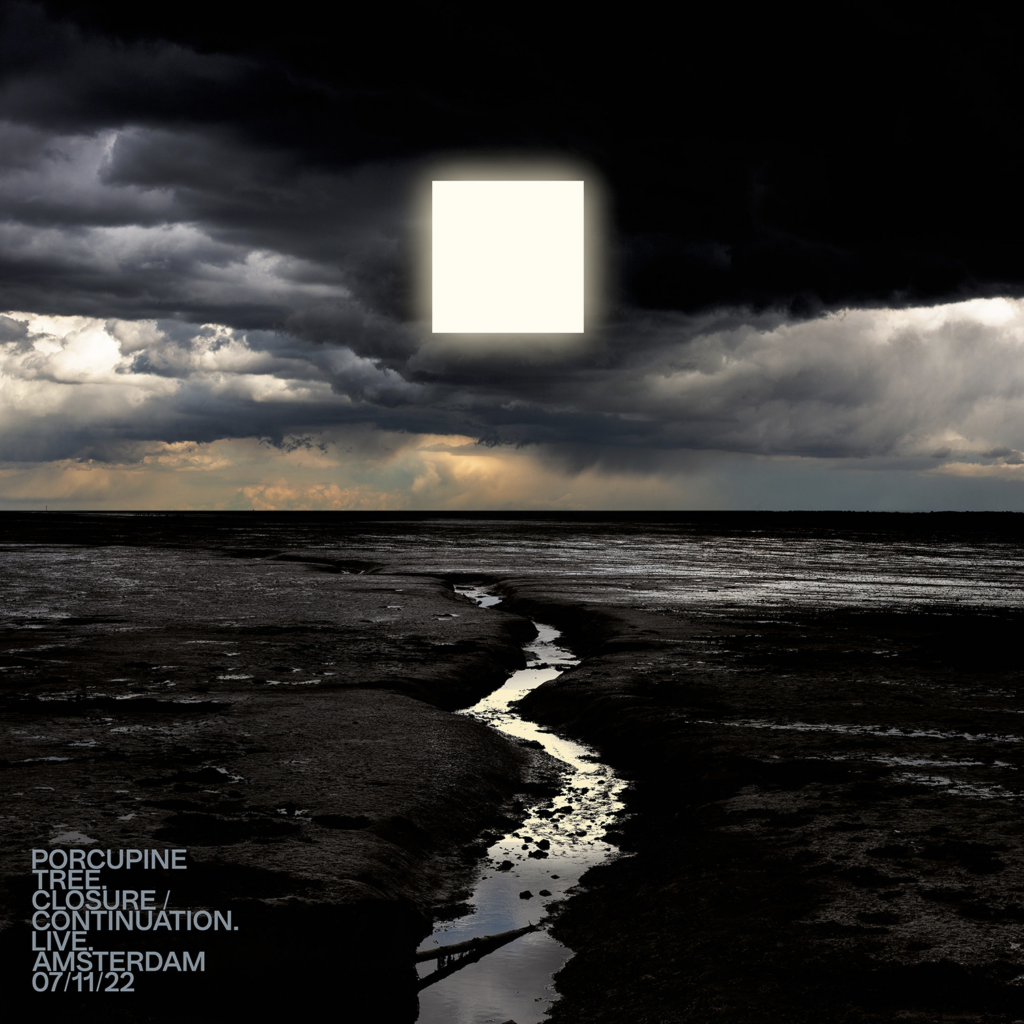
You were involved in so many reissues last year, but one project that I think may have been somewhat overshadowed by higher-profile names like Tears For Fears and The Who was Suede’s 1993 self-titled debut album. I’d never heard the album before and instantly liked the music, but I thought the original stereo mix sounded a bit thin and murky. I think your new mix is a real improvement overall, though it does deviate quite a bit from the sound of the original in places. Was there anything different about your approach here versus other remix projects?
I remember buying that record on the day of release. I think it was the fastest-selling debut album of all time in England at that point, though it was probably overtaken by The Spice Girls a few years later. The band were on the cover of every magazine at one point, and it kind of kick-started the whole Britpop movement that reached its zenith with bands like Oasis, Blur, and Pulp in the mid-90s. So it's a very significant record for British people.
I definitely didn’t think it was the most sonically-amazing record out there. Even Ed Buller, the original producer who oversaw the remix, would admit it wasn’t the best-sounding record. The band were signed to an independent label at the time and they hadn’t released anything, so no one knew who they were. They were going into cheap studios with small budgets in order to make that record.
So I think there was certainly room for improvement in the remix. There have been a few records I’ve worked on over the years where I felt that way: Jethro Tull’s Aqualung (1971), King Crimson’s Lizard (1970), and probably a few other examples I can’t think of at the moment.
Gentle Giant’s The Missing Piece (1977) is definitely one I’d put in the "most improved" category.
Great example. I don’t know why the original mix sounded so thin, because the multitrack recording was great.

Those tend to be the projects I enjoy the most, because I feel like I’m not only creating a spatial mix but also an improved version of the stereo. With something like Who’s Next (1971) or Tears For Fears' The Seeds Of Love (1989), there’s nothing I can do to make those records sound any better! All I can do is try as hard as I can to live up to the original, because it’s definitive.
It’s always interesting to me how some bands cross over internationally and others don’t, even within the same genre or music scene. I’ve been to a lot of used music shops around the United States and I’ve never seen a Suede CD or LP, yet Oasis seems to be everywhere here.
It is interesting. I suppose there's something quintessentially-English about Suede: their lyrical preoccupations were closer to a band like The Smiths, for example, though The Smiths seem to have gained a lot more traction in America over the last two or three decades.
I think the opposite is also true: certain artists were huge in America, but you would have a hard time finding their records in the UK. I'm sure every country has its equivalent in that sense.
In the Suede Atmos mix, there are instruments popping out that are either really buried or completely inaudible in the original stereo version. For example, I never really noticed the acoustic guitar that’s playing in the side speakers throughout “Animal Nitrate.” I thought it was cool how you brought that part out, but at the same time I wonder if someone who’s been listening to the album for 30 years might be bothered by it.
That’s kind of the tightrope you walk with these projects. Bringing out things that were buried in the original mix might sound objectively better to you, but it could end up messing with someone else’s memories. The people who really know these records and have been listening to them for 30, 40, or 50 years might find any minute difference jarring, even if it’s subtle.
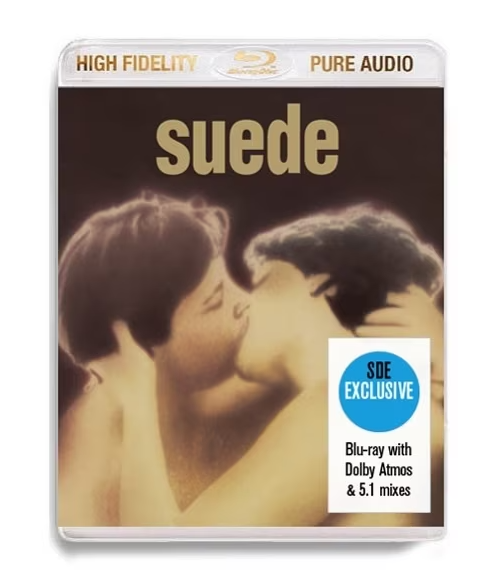
I think that when you take all the instrumentation that was originally crammed into two channels and then spread it out over an 11 or 15-speaker environment, it’s inevitable that you’re going to hear things that you probably couldn't hear before.
That's true, and I think it’s one of the things certain people don’t like about spatial audio and surround. I’ve got a few friends that don’t care for it. They just don’t like stuff coming from above or behind them. Fair enough, it’s not for everyone.
I remember reading a study about spatial audio years ago, when I first started getting into 5.1 mixing. It said that any sound coming from behind the listener triggers a primal instinct of fear, adrenaline, and self-preservation. So when they hear a vocal or something percussive from behind them, it can actually be quite a slightly uncomfortable sensation. I find that fascinating, and perhaps partly explains why some people only like stereo.
Suede’s second album, Dog Man Star (1994), celebrates its 30th anniversary later this year. If asked, would you do a Dolby Atmos mix of this album? “The Asphalt World” especially seems perfect for it.
I saw you put that into your 2024 predictions article, but I couldn’t possibly comment. [laughs]
It's a great record. Now that they’d become the biggest band in Britain off the success of that first album, they could book all the time they needed in the big studios and really indulge themselves. That’s exactly what they did with Dog Man Star, and the irony is that it ultimately led to the dissolution of the original lineup.
To me, that’s also the difference with Tears For Fears between The Hurting (1983) and Songs From The Big Chair (1985). The former was made by a band that no one had heard of working anonymously on a small budget, then suddenly they’re successful and they’ve got this newfound confidence. Then it’s like, now we can make our masterpiece, we’ve got the mandate to be as ambitious and self-indulgent as we want to be! I always love it when bands get to that stage, and that’s definitely what happened with Dog Man Star.

You could say that almost the same exact thing happened over here in the US with Guns ‘n’ Roses Use Your Illusion albums.
You’re right. I didn’t really know that record until I was asked to remix it recently, and I grew to love it. Two double albums’ worth of material released on the same day! You can’t help but admire the sheer ambition and arrogance of that.
It was recorded on 24-track, though some songs like “November Rain” had two or three slave reels running in sync. To mix it analog must have been an absolutely tortuous process. My digital session was probably around 120 channels.
Was the Suede debut album also recorded analog, or were they already using digital by the early-90s?
Yeah, it was analog. Almost all of the songs had two 24-track reels, a master and a slave.
It came out a while ago now, but one of my favorite Atmos mixes you’ve done to date would have to be The Grateful Dead’s American Beauty (1970). Like a lot of people, I was surprised to learn that The Dead were in your wheelhouse.
I’ve always been a fan of The Dead, but they’re kind of a cult band in the UK. Most of the music I listen to is under the radar anyway, so I was obviously familiar with them.
Rhino approached me initially to work on another album called Blues For Allah (1975), though for some reason that one hasn't come out yet. Maybe they’re waiting for the 50th anniversary next year? It’s a more psychedelic album and it sounds great in Atmos.

After that, they asked me to do American Beauty and the triple live album Europe ‘72. These are both out, though sadly not in physical form. I saw they recently put out Workingman’s Dead (1970) with Mickey Hart doing the Atmos mix, so I imagine he’ll probably carry on with the rest of the catalog.
One thing I really love about the American Beauty Atmos mix is how heavily you used the side speakers. This is something I’ve noticed with all the early-70s records you’ve done spatial mixes of, like Who’s Next or Van Morrison’s Moondance. Looking specifically at a song like “Friend Of The Devil,” the options for making a 5.1 mix seem pretty limited. I think it would sound strange to have the drums in the front speakers and acoustic guitars in the rear, because those elements need to blend together a bit in order to drive the rhythm. Since the side speakers are closer to the front soundstage, it’s possible to get away with more aggressively separating out those rhythmic parts.
Yeah, I’m a huge fan of the side speakers. There are definitely certain elements that would sound too divorced from the rest of the rhythm section if you put them in the rears, but–as you say–you can put them in the side speakers and they still sound like they’ve got the glue. Do other people use them less?
As far as Atmos mixes on the streaming services go, there’s a real variety of approaches. That's one of the things I find fascinating about spatial audio in all its incarnations, that even after two decades of 5.1 music releases there’s still no rulebook or guidelines for how to approach the format.
When it comes to Atmos and 5.1, I have certainly developed my own approach. There are specific things like the placement of the vocal, drums, and other elements that people can recognize as hallmarks of my mixes I guess. Maybe it’s not always a good thing that I use a similar methodology most of the time, but at the end of the day it’s the way I’ve found that works best for my ears after much experimenting. All the same, sometimes I will intentionally break out of those conventions and try different things–which I think I did with the Atmos mix of The Harmony Codex.
As you know I first approached surround mixing quite naively, because I'd never really listened to anyone else's mixes–except for Elliot Scheiner. I went to Elliot’s studio in upstate New York when he did the 5.1 mix of In Absentia (2002), and he also played me a few Steely Dan tracks he’d done in 5.1. That was all I heard until I started doing my own mixes of the Porcupine Tree and King Crimson albums. I had no idea what was or wasn’t expected. I would put a lot of stuff discretely in the rear speakers, which it turned out not many people were doing.

A big reason why the recent Moondance Blu-Ray release was so cool for me is that it’s the only instance where both you and Elliot have done a surround mix of the same album. I’m not sure if you ever had the chance to listen to Elliot’s 5.1 mix, but there are definitely some interesting similarities and differences between the two versions.
I heard it once many years ago, and I thought it was brilliant. When I came on to do the Atmos mix in 2022, I deliberately didn’t go back and listen to his 5.1 mix. I already knew it was great, so I didn’t submit a 5.1 for that project. I wanted to approach the Atmos mix with a completely fresh perspective.
Since you mentioned not delivering a 5.1 for Moondance, that brings me to another question. For these digital-only Atmos releases like The Grateful Dead or Chic, do you still create a dedicated 5.1 mix even though it ultimately won’t be released?
Yes. I always start with a 5.1 mix, which then becomes the bed of my Atmos mix. I like that approach, because I know there are still a lot of fans with 5.1 setups. If I only have five speakers to work with instead of eleven, I’ll do different things.
The caveat is that if I know the 5.1 mix isn’t going to be used, I probably won’t spend as much time on it. It’s just the stepping stone to the Atmos mix, so I won’t work on it to the point where it’s release-worthy. That said, it wouldn’t take me a lot of time to go back and get it to that point. If someone decided they later wanted to release the 5.1, I’d ask for a day just to go back and revise to the point where I’m happy with it as a standalone mix.
You’ve taken on a lot of remixing work from Warner/Rhino in recent years, who seem to have suddenly become very pro-Blu-Ray in the past few months with the aforementioned Moondance standalone release and also the Super Deluxe box set of The Yes Album (1971). I wonder if it’s only a matter of time until we see those Grateful Dead mixes out in physical form?
Yeah, you're right. I think they must have seen what Paul Sinclair is doing over at SuperDeluxeEdition.com. To sell five or six thousand units of a Blu-Ray is good business, even for a big company like Rhino. So I think Paul has been very influential in showing the major record labels that there are still people out there who want physical products and Blu-Ray in particular, but it has to be the right title. For example, the Tears For Fears titles flew out.
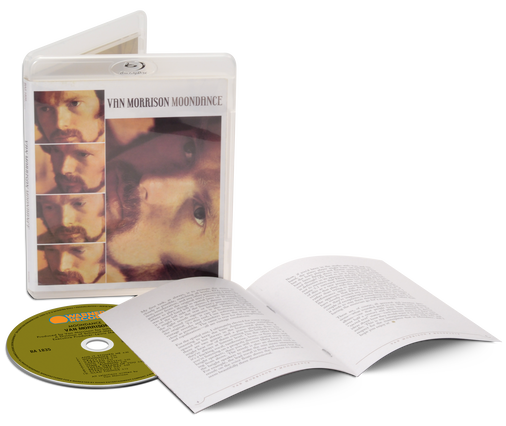
I don't know how Moondance has sold, but I imagine that they've probably done pretty well with it. It's such a classic album, plus you’ve got the high-resolution stereo on there as well.
Another one of the best releases of last year was ABC’s The Lexicon Of Love (1982). Trevor Horn seems to be interested in spatial audio, since he just released a new solo album on Blu-Ray with 5.1 and Atmos, so is there any chance you could be doing Atmos mixes of other classic albums he produced?
I’ve already remixed one more ‘80s album he produced, but that’s all I can say for now.
I think he did the Atmos mix of that new record, but with the older catalog stuff it seems Trevor is happy to delegate and let me work on those–which is amazing for me, since I grew up listening to his productions.
I’m sure people have asked you about this one before, but Yes’ 90125 (1983) would sound great in 5.1 or Atmos. Even just “Owner Of A Lonely Heart” as an Atmos streaming single, like they did with A-Ha’s “Take On Me,” would be really cool.
I agree, that album could be great in Atmos–even if it is a bit front-loaded with that one brilliant single.
The Ultravox series continued in 2023 with 1982’s Quartet. Will you also be remixing Lament (1984) in 5.1 for a 40th anniversary edition?
Yeah, it was done a while ago. It’s due to be announced any day now, I think.

Like we were talking about before with Suede, Quartet is one of those records where I think you were really able to improve upon the original stereo mix.
I agree. That was a slightly odd-sounding stereo mix. It sounded slightly muffled and muted, didn’t it? I think the band always felt that way, so I’m happy we were able to make some improvements.
George Martin and Geoff Emerick worked on that record, and they’re one of the most revered producer/engineer duos around. So it always surprised me that the original mix didn’t come out great.
Just because someone has a great CV doesn’t necessarily mean they’ll do a great job on your record. George Martin and Geoff Emerick worked on so many great records over the years, but I think they weren’t the right fit for Ultravox at the time. I know I've made some artistic decisions that I’m not so happy about, but it becomes too late to turn back and you have to put it down to experience. Sometimes it's almost beyond your understanding why certain records gel and others don't.
I always come back to something Robert Fripp told me about the concept of artistic genius. He said that genius is not a person, it’s a spirit that temporarily visits someone and then moves onto someone else. He says he feels King Crimson were temporarily visited by the spirit of genius in 1969, when they were making In The Court Of The Crimson King, then it left them and moved on to other artists to enable them to make their masterpieces.
I just love the idea that the spirit of genius moves from artist-to-artist. In that definition, there’s no such thing as a genius in human form–because that person would never make any bad art, and no one can produce great work all the time. I guess the better artists at least recognize when something isn’t good enough and don’t play it to anyone else!
I hope the 40th anniversary release of Quartet leads to a reappraisal of that album in the fanbase, because–underneath the blasé production aesthetic–it turns out there was some really great material. I might even prefer it to Lament.
I’ve never been a big fan of Quartet, but the process of deconstructing and reconstructing it definitely gave me a greater appreciation. Personally I still prefer Lament, but if you or anyone else has a newfound liking for that record as a consequence of my work–that’s amazing. That’s as much as I could ever wish for with these projects.

The Ultravox reissues started with 1980’s Vienna, when Midge Ure joined the band, but is there any interest in covering the John Foxx era? I think Systems Of Romance (1978) would sound great in surround.
I like the first three records, but they didn’t sell as well at the time and are now considered cult albums. By contrast Vienna was massive, though maybe not as much in America versus England. The single “Vienna” in particular was really everywhere here in 1980. So that was definitely their commercial breakthrough.
The other issue is that the earlier records belong to a completely different label. Vienna through Lament belong to Chrysalis, whereas the early records were released on Island Records which is now part of Universal. I don’t have a relationship with the team looking after that catalog, but I suspect those records aren’t popular enough to justify the expense. Not that I’m the limiting factor there–I’ll do a project for almost any budget if I really love the music–but you have to factor in the other costs like baking the tapes, disc authoring, licensing fees, etc.
One interesting thing about Atmos in comparison to 5.1 is that the barrier to entry is actually much lower. Technically, all you need to get started is a compatible DAW, the Dolby Renderer, and a pair of headphones. I think that’s actually really cool, but–if you’re an indie band looking to justify the expense of having a mix done in a proper multi-speaker environment–there’s really no chance to recoup your investment from a streaming-only release. I suppose the best you can hope for is a boost in publicity, if Apple moves your album to one of their “made for spatial audio” playlists.
For contemporary album releases, it seems to have become something you’re now expected to deliver along with the stereo. So if you’re a young artist signed to one of these big labels and working on your debut record, you’re expected to deliver a spatial audio version too.
You probably don’t need me to tell you that a lot of these are cranked out by people that have no real understanding or experience with the format. That said, I think there are artists both old and new who are genuinely enthused by the possibilities of spatial audio and taking the time to do it properly.
An even smaller subset of those artists are passionate about physical products. As we were talking about before, the success of someone like Paul Sinclair seems to have gotten the attention of a big label like Warner. Richard Wright’s Wet Dream (1978), another Atmos mix I recently did for them, also got released on Blu-Ray.

Whenever I deliver Atmos mixes, I’m always pushing hard for physical–but I can only push so hard before the record company gets fed up and stops responding to my emails! But I am definitely a physical product guy, and I know there are a lot of people who feel the same way.
Here at IAA, an alternative release avenue we’re pursuing for spatial audio mixes is hi-res digital downloads. I know digital files don’t quite have the same collectability factor as a physical disc, but fans get to permanently own the music in Blu-Ray quality without the artist having to invest in disc production. So I’ll go looking for independent artists or labels with Atmos material out on the streaming services and propose the idea of a downloadable version, from which they get 80% of the proceeds from each sale. Even if they were to sell only ten downloads on our site priced at $25 apiece, that would be $200 in the artist’s pocket. I imagine it would take considerably longer to make that same amount solely from streaming revenue.
That's brilliant. You’re kind of providing the same service as Bandcamp, but they haven’t adopted spatial audio. As far as I’m aware, you can only do stereo right now on Bandcamp.
You’ve recently been asked to create new Atmos mixes of some titles you’d previously mixed in 5.1, such as The Yes Album and King Crimson’s Larks Tongues In Aspic (1973). In the case of Yes, I understand you used the 2014 session as a starting point for the new Atmos version–whereas the King Crimson album was remixed completely from scratch in stereo, 5.1 & Atmos. For these projects, how do you decide whether to start fresh or use the existing version as a template?
There are two considerations. One is purely technical: the first version of Larks Tongues was done on an old computer–which I no longer have–at 48k because that’s the best my old system could handle, and using audio processing plug-ins that were less advanced than what I have now. So when the opportunity came to do the Atmos mix, I went back to the 96k multitrack transfers and loaded them onto my new system–where I’m now using incredible emulations of vintage equipment.
The other is that I felt I could do a much better job now with another decade’s worth of trial-and-error working on these remixes. The King Crimson series was my first attempt at rebuilding classic albums from the analog tape transfers, and I learned a lot from the experience. So for all the Crimson stuff, I’m rebuilding those sessions from scratch with the higher-resolution files, using completely different technology, and perhaps bringing a different more-experienced ear to how I approach them now. One thing I’m doing with Crimson is being more faithful to the original mixes than I was the first time around, taking care of reproducing more of the finer details.

The Yes Album remix was already done comparatively recently and on the new system, so there was no need to start fresh–it was just about making the Atmos mix. All the same, I still tweaked the older mixes a little bit too.
A lot of fans like myself would probably love it if you went back and did new Atmos mixes of all these older 5.1 projects, like the XTC and Gentle Giant catalogs. I think the problem for the record companies–as much as they are in the business of continually reselling older music–might be that the physical editions with those 5.1 mixes were essentially definitive, so it would be difficult to pull together enough archival material to justify another reissue. For the XTC series especially, I can’t imagine there are any more demos and outtakes sitting in the vaults.
I think there could be ways to get new Atmos mixes out there. Maybe a small run of standalone Blu-Rays?
With XTC, Andy [Patridge] definitely put out everything they had in the vaults on those CD/Blu-Ray sets: demos, instrumentals, videos, etc. So you’re right, there wouldn’t be anything new to add there other than an Atmos mix.
I suppose you could have said the same thing about The Yes Album though. The 2014 version was definitive at the time, but I’m told that the new Super Deluxe set is selling very well.

As we discussed in our last interview, Tears For Fears’ The Seeds Of Love (1989) has to be one of the most complex–if not the most complex–album you’ve remixed thus far. What was it like revisiting those sessions again almost a decade later for the Atmos mix?
Almost without exception, whenever I go back to older work I’ve done–even something as recent as a year ago–I find myself thinking “why did I do that?” I suppose I’m constantly learning from my mistakes and thinking of new ways to approach these things purely from experience. So I wouldn’t say I was horrified by my original 5.1 mix–it still sounds pretty epic–but there are definitely things I wanted to approach differently for the Atmos.
I still can’t get over how dense the production is on that record, especially the second half. Maybe it was too big even for 5.1?
Roland [Orzabal] would probably say there was too much going on, but I love that album for all the criticism it gets from certain quarters about being overproduced and over-wrought. I couldn’t disagree more, I think it's a masterpiece and wouldn’t change anything about it. That said, there’s definitely a case to be made that it was too big and layered for stereo to contain. It sounded great in 5.1, but it’s even better now in Atmos.

I met Bob Clearmountain at an audio conference a few years ago and had the chance to ask him about his experience working on The Seeds Of Love. His mix of “Woman In Chains” is the one that’s on the record, but I didn’t know that they rejected his work on “Sowing The Seeds Of Love” and “Year Of The Knife.”
They used half of his mix for “Year Of The Knife.” That track actually cuts to a completely different mix halfway through. I didn’t realize this until I got the multitrack tapes, but it cuts to a completely different performance by a different band in a different studio on a different year. I think it happens on the word “rain.” The whole first half has a programmed rhythm track, then the second half has Simon Phillips on drums.
It’s mind-blowing when you get into these things and start to realize some of the creative decisions that have been made over the years. The edit is pretty seamless, but once you figure it out you might never be able to unhear it. [laughs]
We spoke briefly about it before, but Gentle Giant’s The Missing Piece is due out on Blu-Ray in several weeks. I still don’t think that record is quite as good as some of the earlier ones–I miss those crazy vocal counterpoint bits in songs like “On Reflection” and “Knots”–but there’s a lot of strong material and the sound quality is vastly improved in the remix. Is there any chance you’ll be doing more remixes for them, or is this the final entry in the series?
Yeah, I think the album is great. In fact, I’m not sure I can necessarily agree it’s not as good as the previous ones. Interview (1976), the previous one, for me felt a bit rushed and ‘more of the same’ while this one certainly doesn’t. All of side one, with the exception of the punk pastiche, is Gentle Giant playing progressive pop and they do it brilliantly. So I’ve always been a fan of that record.
I suspect it might be the last one in the series, unless more multitrack tapes show up for the earlier albums.
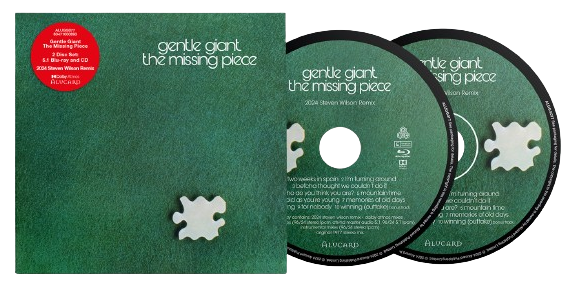
Assuming the tapes still exist, could the 1977 live album Playing The Fool be a possibility? It’s a great recording and the band is absolutely on fire.
Maybe. I mixed one track from that, the “Excerpts From Octopus” medley, for the Octopus (1972) reissue because they didn’t have the tapes for three of the studio songs–two of which were represented in the live medley.
The 2017 Three Piece Suite compilation included your remixes of the surviving tracks from Gentle Giant’s first three albums, though it appears that the full tape set for the 1970 self-titled debut was located at some point later–because the 2019 Unburied Treasure compilation included a Blu-Ray with complete stereo & 5.1 mixes of that album.
That's exactly what happened. Originally, they had multitrack tapes for three of the seven tracks on the debut album: ”Giant,” “Nothing At All,” and “Why Not?” We included those on Three Piece Suite, but then a fan came forward with complete ADAT copies of the multitracks for the first album. ADAT resolution is 48-khz/16-bit, so they don’t sound quite as good as the hi-res analog tape transfers–but it was definitely better than nothing.
So they could presumably do a standalone CD/Blu-Ray release of the first Gentle Giant album with your stereo & 5.1 remixes made from the ADAT multitrack copy, and maybe also a new Atmos mix?
Yes, that’s something that could be done if they wanted to. But if it was down to me, I’d choose to revisit The Power and The Glory (1974) in Atmos first as that’s my favorite Giant album.

Interestingly enough, I’m told there was a similar situation with Roxy Music’s Avalon (1982). Bob Clearmountain’s 5.1 mix from 20+ years ago was made from a ‘90s-era digital copy of the multitrack, but it sounds absolutely amazing.
XTC’s Apple Venus (1999) was recorded using the Otari RADAR format, which I think was 48-khz/16-bit, and it’s one of the most beautiful-sounding records I’ve ever heard. The Seeds Of Love was also an early digital recording done at 48k. So I think people tend to get a bit hung up on the technical details, but those things don’t matter as much if the original recording is done well.
In the case of the first Gentle Giant album, I could definitely hear that the ADAT copies weren’t as good as the analog tape transfers we had for those three tracks.
Circling back to XTC, last we spoke it seemed like the series was over–but then the tapes for 1984’s The Big Express suddenly turned up. Has there been any further success in recovering the multitracks for English Settlement (1982), Mummer (1983), or any of the other albums?
We’ve got half of White Music (1978), half of Mummer, and four tracks from English Settlement, but Andy isn’t really interested in moving forward unless we can do the full albums–which is understandable.
I suppose one way to proceed would be a Three Piece Suite-style reissue, but XTC were constantly reinventing themselves between albums. With Gentle Giant, there wasn’t a huge difference between the debut album, Acquiring The Taste (1971), and Three Friends (1972)–it sounds like the same band. The difference between White Music and English Settlement on the other hand is massive, so I can’t really imagine putting tracks from both those albums on the same program.
I’m not sure what we're going to do next, but we're still looking for tapes. We found The Big Express, so who knows what might turn up next?
Another option could be a massive box set covering the entire discography–something in the vein of Gentle Giant’s Buried Treasure or Van Der Graaf Generator’s The Charisma Years–as a big way of capping off the series. These leftover songs from the incomplete albums could go on a "bonus disc" of sorts, so they wouldn't be the main focus of the reissue.
Yeah, maybe. That would also be a good opportunity to do Atmos mixes of all the other records, like we talked about earlier. I think there are still possibilities for the XTC catalog, even if we don’t find any more tapes. Rest assured I don’t think The Big Express will be the last release.

That brings me to one final question. At least within Pro-Tools, a big difference I’ve noticed with working in Atmos versus stereo or even 5.1 is that there’s no master output–so you can’t put mastering plugins like a limiter or analog tape machine emulation on the entire mix. Does this affect your workflow?
That’s true, you can’t put a single mastering chain across the entire mix. When I’m mixing Atmos in Logic, each object can be assigned to a unique output with its own bus. So if I want to do some kind of mastering, I have to copy my plugin chain to every single output bus that exists in the mix. If there are 40 objects in the session, I need to copy that chain across all 40 output buses.
The one thing you can’t do with this workflow is parallel compression, but I think that concept is mostly redundant in spatial audio anyway. The whole idea of parallel compression is to create this kind of ‘pumping’ sensation in order to get energy in your mix. So, for example, every time the bass drum hits, the whole track kind of ducks or pumps momentarily–which can give the impression of power, excitement, and volume.
With spatial audio, the instruments are no longer sympathetically affecting each other in that same way. I’ve heard people criticize spatial audio for not having the same energy as stereo, and in a way they’re right. There is something about funneling all the audio information down two channels, like a sort of natural compression where everything is fighting against everything else for supremacy, that can be very exciting.

I think a lot of people feel that way because most Atmos mixes seem to have been created from pre-mixed stems. If you get handed a two-track of the entire drum kit with all the compression and reverb from the stereo mix baked in, it’s going to sound tiny and weak when you break it out into spatial audio. I suspect that part of the reason why your mixes sound so good is because you’re being sent raw unmixed tracks, so you have total control over the dynamics and processing.
Yeah, I’ve had that. Def Leppard’s Diamond Star Halos (2022) was mixed from stems.
Instead of a stereo stem with all the drums combined, at least I’ll ask for the kick, snare, and overheads as separate stems–so that helps circumnavigate the problem you mentioned of the drums sounding flat and two-dimensional. I also prefer not to have the processing burned in, so things like the reverb returns can be positioned elsewhere.
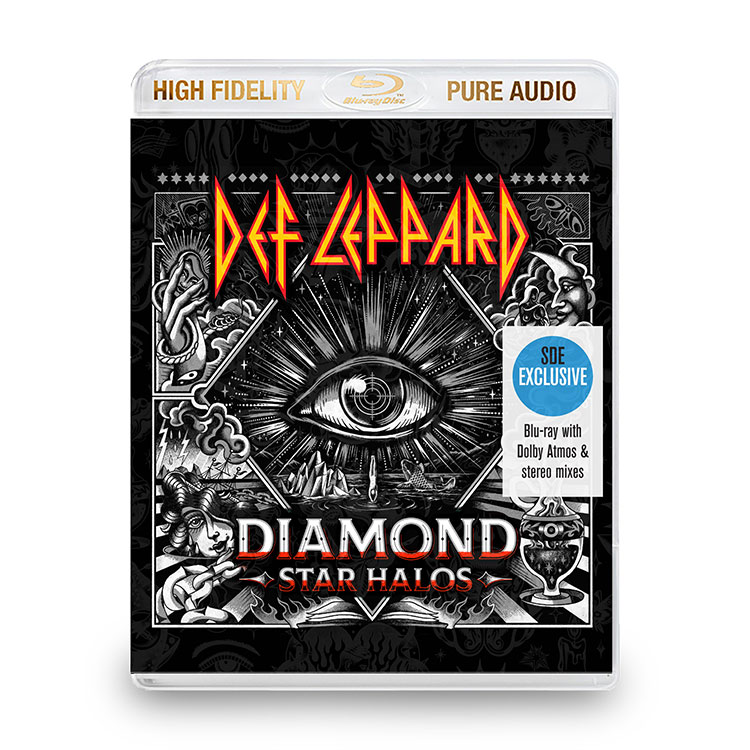
I hope you end up touring in the US next year! Way back in 2018, you played a show at the Capitol Theater in Port Chester, New York–which is like 30 minutes from where I grew up. I was attending college upstate at the time, but I always kick myself for missing that show.
Oh yeah, I remember that venue. The whole backstage area was like a shrine to the Grateful Dead. [laughs]
That was a great tour, but at the end I was definitely ready for a break. So I didn’t really mind sitting the last album or two out touring-wise, but by early 2025 I think I’ll be raring to go again–and I'm sure we'll come back to the US.

